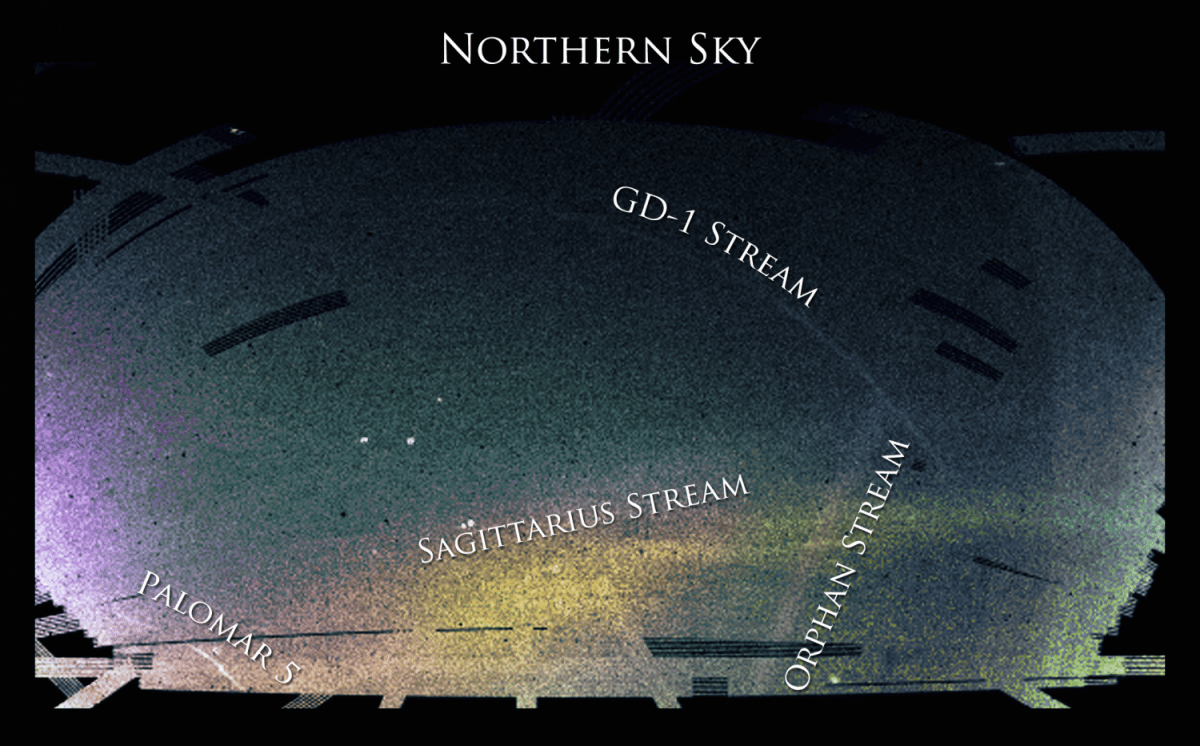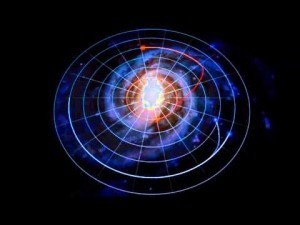Yesterday I talked about how we can measure the size and shape of our galaxy even though much of it is obscured by gas and dust. As I pointed out, we can only observe a small fraction of the stars in the Milky Way. But then how do we know how many stars there are in our galaxy? The short answer is we don’t, but we can get an idea by measuring the mass of our galaxy.
Typically the way the mass of our galaxy is measured is to measure the speed of stars and other objects in the Milky Way. This gives us a mass of about 100 – 400 billion solar masses. Not all of that is due to stars, but it gives us a basic idea of the number of stars in our galaxy. But recently a more accurate measure has been determined, and it was done by observing globular clusters. Globular clusters are dense, spherical cluster of stars. Their shape comes from the fact that they are clustered under their own gravity. They are not located in the plane of our galaxy, but instead are found in all directions in a kind of halo around our galaxy. They were first used by Harlow Shapley to determine the basic structure of our galaxy in the early 1900s.
The thing about globular clusters is that they aren’t completely gravitationally bound. Through various gravitational interactions, a few stars escape a globular cluster at a regular basis (a process called evaporation). As a result, these clusters leave a trail of stars behind as they slowly orbit our galaxy. In this recent work the team looked at these trails and found that they had variations of density within them. This means the rate of evaporation varied over time. When they analyzed these variations, they found a pattern, and this pattern is dependent upon the overall mass of our galaxy. Basically that means the evaporation is affected not only by gravitational interactions within the globular cluster, but also interactions between the cluster and our galaxy. So the team used this data to determine the mass of our galaxy. What they found was that within a radius of 60,000 light years the mass is about 210 billion solar masses.
It should be emphasized that this is only the mass of our galaxy within a 120,000 light year diameter, which is about the diameter of the visible galaxy. Beyond this region our galaxy is dominated by dark matter, which makes up most of the total mass of our galaxy. So we can say that the Milky Way has roughly 200 billion stars.
Paper: Andreas H. W. Küpper et al. Globular Cluster Streams as Galactic High-Precision Scales – The Poster Child Palomar 5. ApJ 803 80 doi:10.1088/0004-637X/803/2/80 (2015)












Comments
I guess that estimate could be refined by applying a couple other things which are probably known.
2.1 billion solar masses of dust + gas + stars. Not sure how much is stars and how much is dust and gas.
Then, it’s necessary to apply a frequency distribution of stellar masses to the portion that exists as stars. If that distribution is skewed toward lower mass stars, the estimate 2.1 billion might be low.
I was thinking 2.1 billion seemed so much smaller than 100-400 billion that I tried a basic web search to find the paper. In an abstract I caught a reference to 2.1 +/- 0.4 10^11 Mo (can’t print the little circular symbol for solar) – this looks like 210 billion +/- 40 billion (i.e. 170-250 billion) solar masses to me. This is much closer – is this correct? If so, I’d say 200 billion stars is a good approximation for the number of stars in the Milky Way – if I’m reading this correctly.
Really enjoying your posts as always. Was funny I was just attempting to explain our solar system’s general location within the Milky Way and how we can only see relatively few stars with the naked eye at night – and lo and behold your post yesterday shows very nicely roughly how far “out” into the Milky Way we can see visually! Thanks! 🙂
Yeah, I dun goofed. I’ve corrected it now.
Hi Alan, you’re quite correct, the abstract of the paper by Küpper et al. does state that “.. we determine the Galactic mass within Pal 5’s apogalactic radius of 19 kpc to be (2.1±0.4)×10^{11} M⊙…”
As you point out, this is around 210 billion +/- 40 billion stars.
Given the huge service to science outreach performed by Dr Koberlein, and the monumental volume of science articles he continues to author, day after day, I think we can forgive the error in decimal places on this occasion.
Besides, I think the main point of Brian’s article is to show how the seemingly unrelated topic of evaporation in globular clusters can be reliably used as a guide to the total number of stars in the Milky Way.
Incidently, I was also greatly impressed with the other calculations made by Küpper et al. who found that the distance of the Sun from the Galactic Center is 8.30±0.25 kpc, and the transverse velocity of our solar system is 253±16 km/s.
Absolutely – I just wanted to confirm I was reading the abstract correctly – and part of me was concerned we had suddenly lost all those stars! 😉